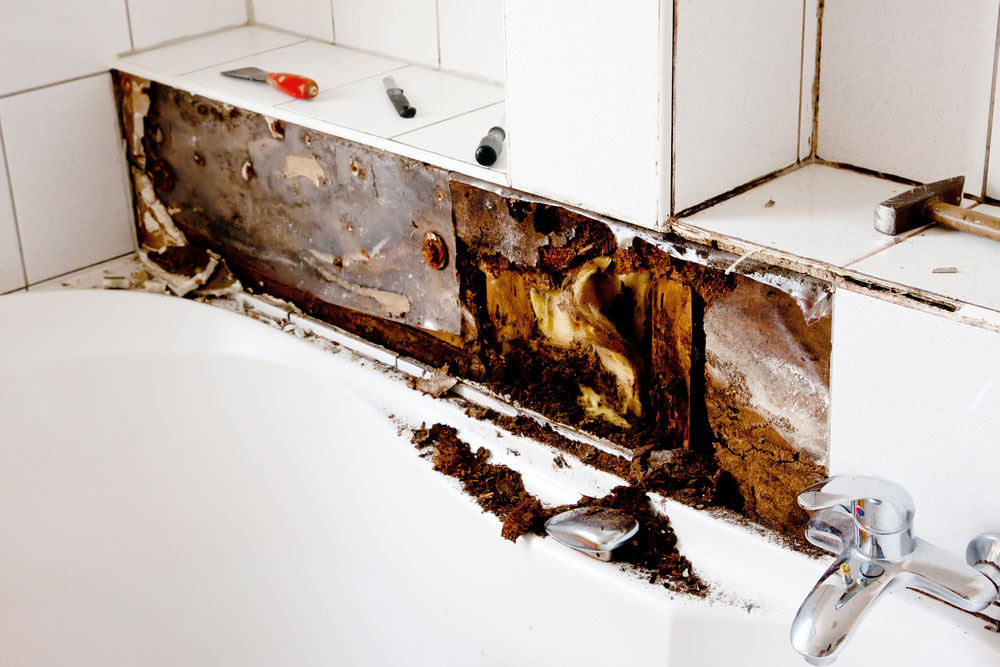Avoiding Water Damage in the Bathroom
Avoiding Water Damage in the Bathroom
Blog Article
Were you trying to locate additional info on Looking for Signs of Water Damage in the Bathroom?

The shower room is very prone for wet buildup and also potential water damage because of the regular use of water in it. This post provides basic examination methods to aid identifying water damage hazards.
The frequent use of water in the restroom makes it incredibly prone for damp build-up and also possible water damages. By evaluating it consistently, you can reduce water related damages.
The adhering to collection of examinations is easy to carry out as well as ought to be done when in every three months in order to maintain your restroom in good shape as well as to avoid prospective water problems brought on by the bath tub, the shower, pipeline joints as well as plumbing, sinks, cupboards, as well as the toilet
Do not overlook performing these inspections and also be detailed while executing them. Remember that these basic evaluations can save you a lot of cash by supplying very early indicators for water damage
Tub and Shower
The shower and bathtub require unique focus and also upkeep. Inspect the tiles and also change if broken. Make sure that there is no missing out on cement between the tiles. Evaluate as well as replace cracked caulking at joints where the wall surfaces fulfill the flooring or the tub. Blocked drains and pipelines troubles will avoid the bathtub from drying out and also might indicate significant issues below the bath tub. Talk to a professional quickly to avoid structural damages. Take note of stainings or soft areas around the bathtub wall surfaces as they may show an internal leakage.
Plumbing
Signs for water damage are tough to discover since a lot of pipes are mounted inside the walls.
Pay unique attention to floor covering and walls moisture and also stains as they might suggest an unnoticeable plumbing trouble. Inspect moisture degrees in adjoining areas also.
Sinks and Cabinets
Sinks and closets are revealed to wetness and moisture everyday and also are commonly neglected. Evaluate frequently under the sink and on the counter top above it. Fix any drip in the catch as it may recommend drain issues. Look around the sink, slow draining pipelines may suggest a blocked drainpipe. Replace sink seals if they are broken or loosened.
The Bathroom
The commode is a susceptible water joint. Check the water lines as well as look for leaks around the commode seat, in the hose, as well as under the water tank. If you discover any kind of indications of dampness on the floor around the bathroom, look for leaks in the toilet edge and also storage tank seals.
Realize that hanging toilet bowl antiperspirants increases the possibilities for obstructions.
Water Damage Signs In The Bathroom To Avoid Cleanup
Musty smell
This is one of the easiest signs to catch because musty smells are so odorous. The damp, earthy, moldy smell should be a big red flag. The smell will develop when moisture gets trapped in surfaces, and begins to facilitate mold growth. Leaking pipes under cabinets, inside walls, and behind shower fixtures will cause moisture to stay trapped and not dry, which will lead to mold growth and spread. As soon as you notice any musty smells in your bathroom, have it checked for hidden water damage and cleanup signs.
Visible mold
If the smell isn’t there to give it away, sometimes you will actually see mold growth. Finding mold in your bathroom is a serious problem, because mold is very harmful to your health. By the time mold growth is visible, it also means that water damage has already occurred and been present for some time. The only way the mold problem can be resolved is to find the source of the moisture and get it stopped. To safely and adequately remove mold, you need to have professionals handle the remediation. Do not waste any time in getting mold problems addressed, fixed, and sanitized so that you can protect you and your family from the many respiratory symptoms caused by mold exposure.
Damaged floors
Bathroom floors should be able to withstand some exposure to water while still remaining in good condition. However, when excess exposure or water leaks occur, they will begin to damage even the most water-resistant flooring. If you notice any cracking, bubbling, staining, or warping on your bathroom floors, there is probably a water leak somewhere causing the distortion. If you notice areas of the floor have become softer, or even have a spongy feeling, there is probably damage to the subfloor. Subflooring is typically made up of plywood. When plywood is exposed to water or moisture, it will absorb it. Once it has become saturated, the weight of the excess water will cause the wood to swell and soften. Check the floors in your bathroom frequently to catch any of these sings before they lead to damaged subflooring.
Changes on walls
When water leaks behind walls, it will cause changes in the drywall. Peeling plaster, blistering paint, and soggy wallpaper are all good indicators that excess water is building up behind the wall. Water leaking behind drywall will cause it to swell and be soft to the tough. If you start to notice gaps along the trim of your walls, or where tile meets the wall, it could also be a strong indicator that there is a leak behind the wall. Any changes, distortion, or damage on the walls should be evaluated as soon as you notice it to prevent further water damage and cleanup.

Hopefully you enjoyed our piece about Preventing Water Damage in the Bathroom. Thanks a ton for spending some time to browse our article post. If you enjoyed reading our page plz don't forget to share it. I praise you for your time. Visit again soon.
Schedule Your Job Now Report this page